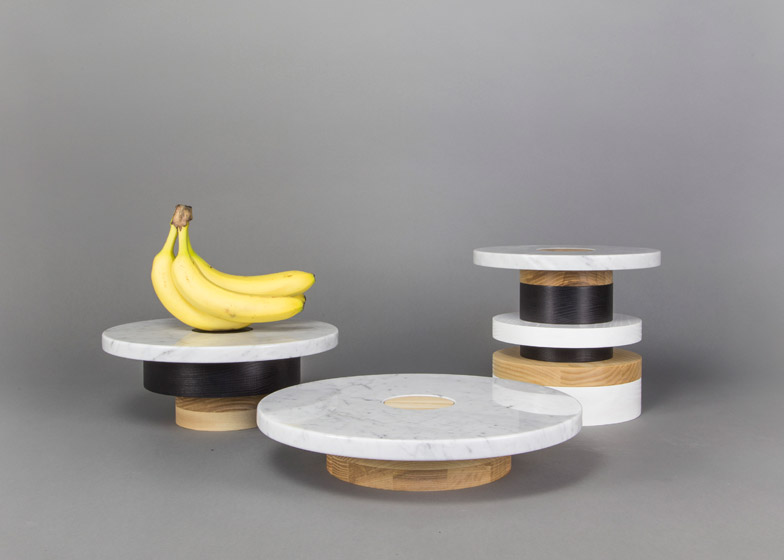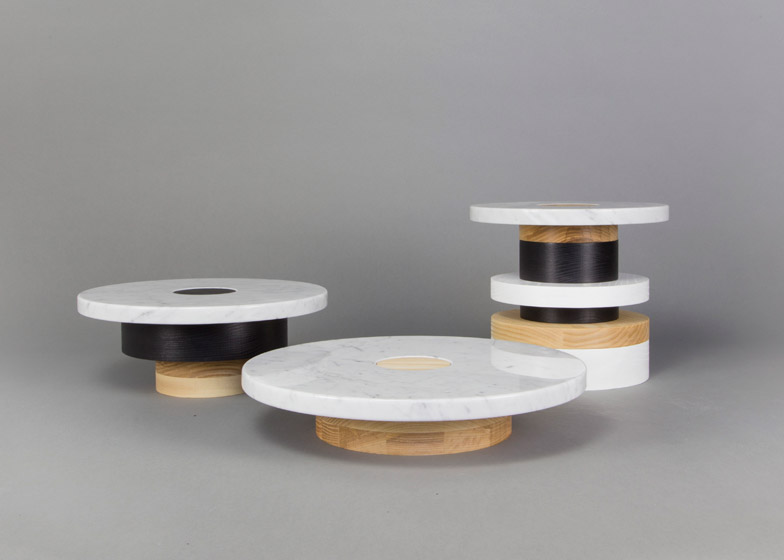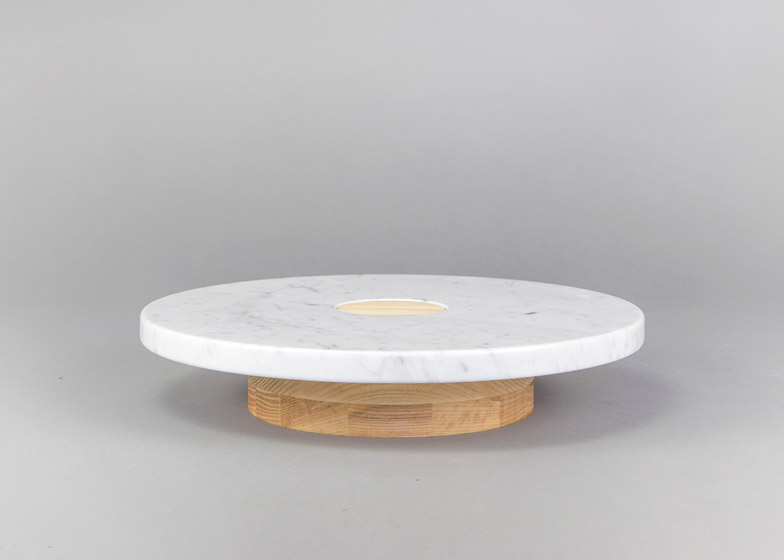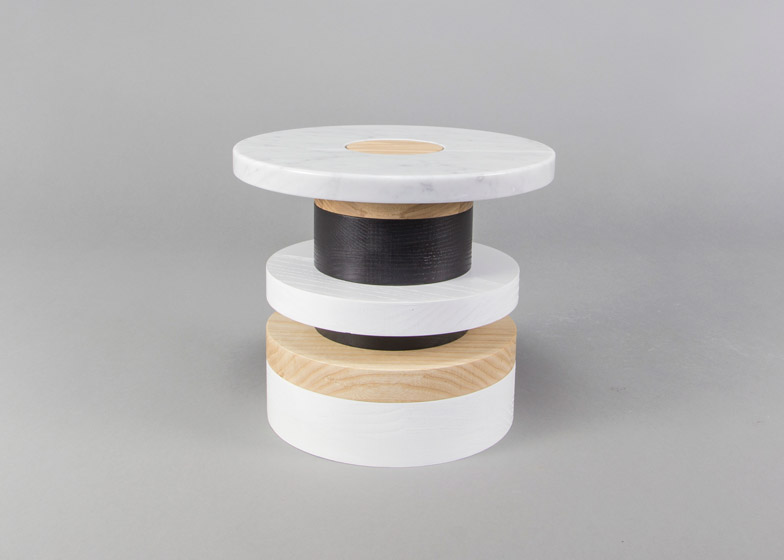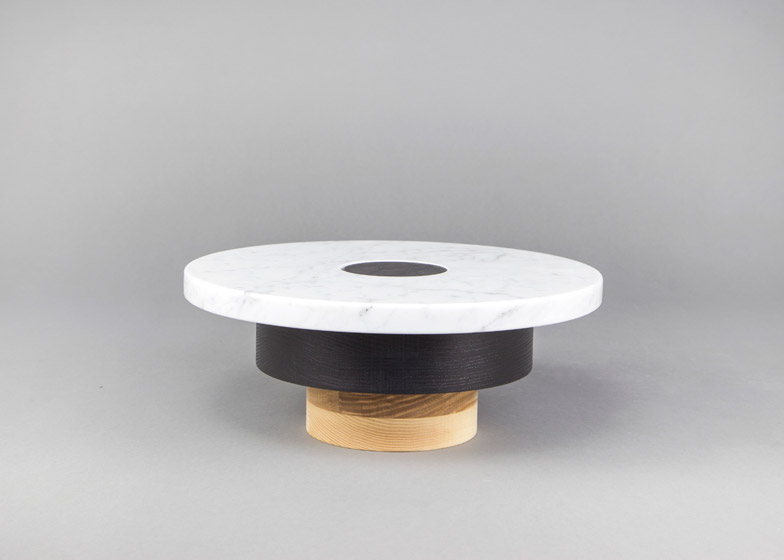Pomo summer: Montreal designers Marie-Pier Guilmain and Maud Beauchamp of MPGMB have created a trio of stacked pedestals influenced by the work of Memphis Group founder Ettore Sottsass (+ slideshow).
Designed for Brooklyn brand Souda, the wood and marble Sass stands come in three sizes of different circumferences and heights. The pedestals can be used as platers, dessert stands or plant holders, or can be used to display artwork or everyday objects.
Souda founder Shaun Kasperbauer said they will initially be made with ash, though other woods could be added later.
The pieces are inspired by Sottsass – the Postmodern design pioneer known for creating totemic furniture and homeware such as the Carlton bookcase.
Although Sottsass often used bright colours and manmade materials, MPGMB's Sass pedestals are made of natural materials in neutral tones.
"The forms and stacked volumes recall Sottsass, and the really graphic quality," Kasperbauer told Dezeen. "It's not a straight 1980s piece, though. The natural wood makes it feel more current."
"The tall one almost looks like a Devo hat," he added, referring to the re-terraced "energy dome" worn by members of the American new wave pop band Devo.
Related content: see more stories about Ettore Sottsass
MPGMB was set up in 2013 by Guilmain and Beauchamp, who have also produced a homeware range that includes terracotta cacti pots and geometric hand-held mirrors.
Souda designs and manufactures its own lighting, furniture and accessories and is beginning to work with like-minded younger designers to extend its line. "We came across their work and thought it was appropriate for our brand," Kasperbauer said.
Interest in Sottsass has continued to grow since his death in 2007 and other designers have recently used natural materials to reinterpret his work.
Gala Fernandez Montero recently created the Caro Ettore installation at Chamber in New York City, a grouping of stacked totems and an erotic board game that pays homage to the Italian designer.
This revival forms part of a wider resurgence of Postmodernism in architecture and design, which Dezeen is exploring in a summer-long series.

